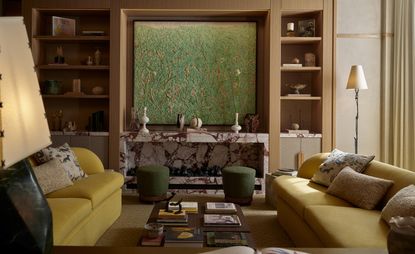London
Let Wallpaper* guide you through the worlds of art, design and architecture in London - and discover where to go and what to see when you travel to London.
-

French bistro restaurant Maset channels the ease of the Mediterranean in London
This Marylebone restaurant is shaped by the coastal flavours, materials and rhythms of southern France
By Ben McCormack Published
-

How to elevate a rental with minimal interventions? Charu Gandhi has nailed it with her London home
Focus on key spaces, work with inherited details, and go big on colour and texture, says Gandhi, an interior designer set on beautifying her tired rental
By Anna Solomon Published
-
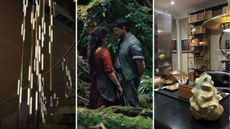
Out of office: The Wallpaper* editors’ picks of the week
Far from slowing down for the festive season, the Wallpaper* team is in full swing, hopping from events to openings this week. Sometimes work can feel like play – and we also had time for some festive cocktails and cinematic releases
By Charlotte Gunn Published
-
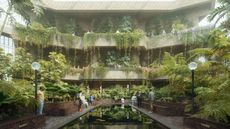
The Barbican is undergoing a huge revamp. Here’s what we know
The Barbican Centre is set to close in June 2028 for a year as part of a huge restoration plan to future-proof the brutalist Grade II-listed site
By Tianna Williams Published
-
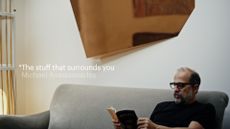
The Stuff That Surrounds You: Inside the home of designer Michael Anastassiades
In The Stuff That Surrounds You, Wallpaper* explores a life through objects. In this episode, we step inside one of the most considered homes we've ever seen, where Anastassiades test drives his own creations
By Anna Solomon Published
-

In addition to brutalist buildings, Alison Smithson designed some of the most creative Christmas cards we've seen
The architect’s collection of season’s greetings is on show at the Roca London Gallery, just in time for the holidays
By Ellie Stathaki Published
-

Sir Devonshire Square is a new kind of hotel for the City of London
A Dutch hospitality group makes its London debut with a design-forward hotel offering a lighter, more playful take on the City’s usual formality
By Lauren Ho Published
-
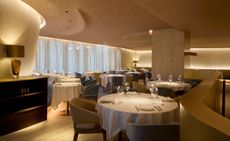
This sculptural London seafood restaurant was shaped by ‘the emotions of the sea’
In Hanover Square, Mazarine pairs a bold, pearlescent interior with modern coastal cuisine led by ‘bistronomy’ pioneer chef Thierry Laborde
By Sofia de la Cruz Published
-
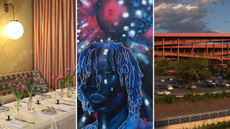
Out of office: The Wallpaper* editors’ picks of the week
It’s wet, windy and wintry and, this week, the Wallpaper* team craved moments of escape. We found it in memories of the Mediterranean, flavours of Mexico, and immersions in the worlds of music and art
By Ellie Stathaki Published
-

Follow the white rabbit to London’s first Korean matcha house
Tokkia, which translates to ‘Hey bunny’ in Korean, was designed by Stephenson-Edwards studio to feel like a modern burrow. Take a look inside
By Sofia de la Cruz Published
-

London art exhibitions to see in December
Read our pick of the best London art exhibitions to see this month, from Joy Gregory 'Catching Flies with Honey' at Whitechapel Gallery to David Shrigley's 'Exhibition of Old Rope' at Stephen Friedman Gallery
By Tianna Williams Last updated
-

The new London restaurants to book now
This month, Clare Smyth riffs on the bistro formula, Hawksmoor takes over the St Pancras London Hotel, and Notting Hill goes Tuscan
By Ben McCormack Last updated
-
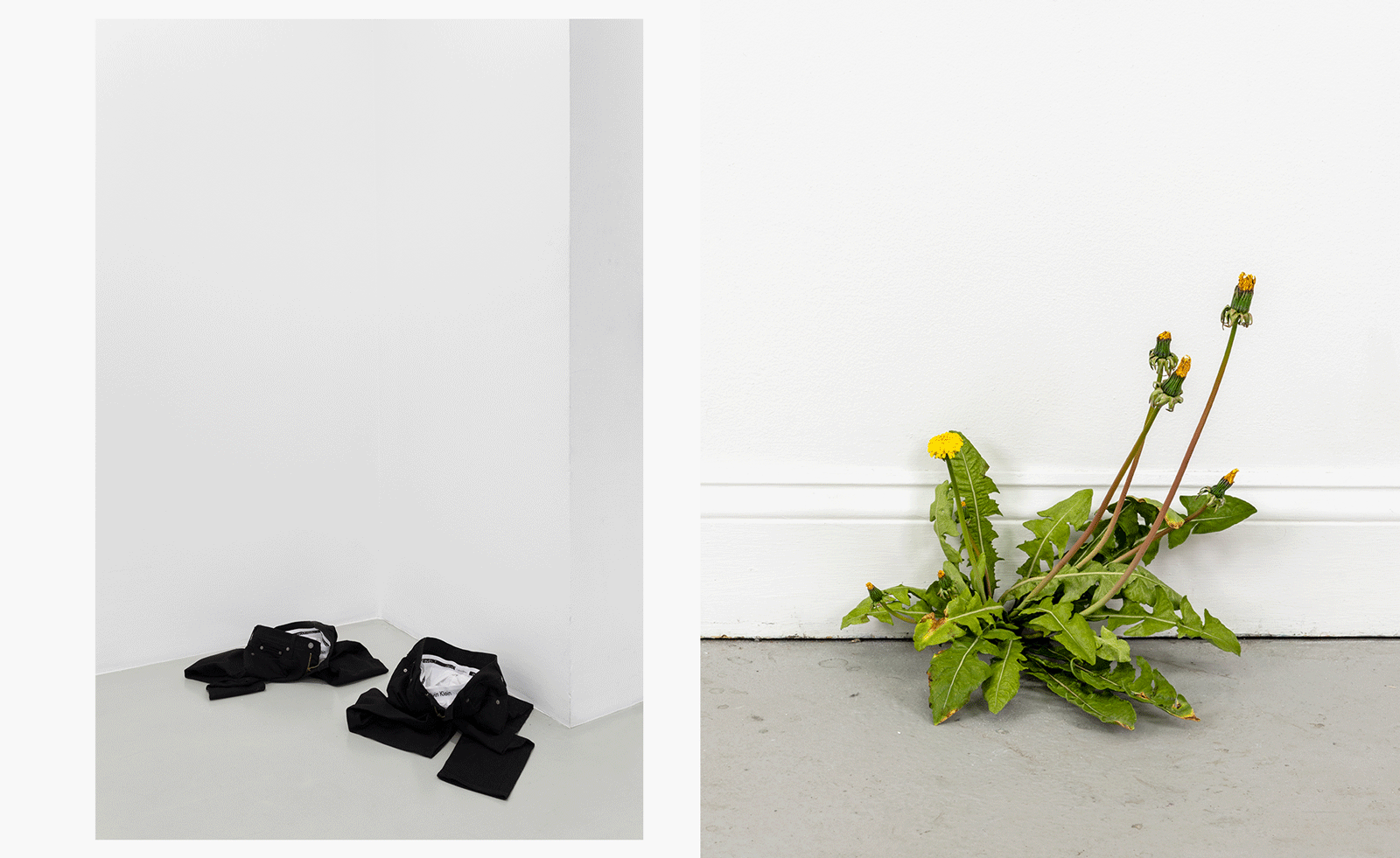
Each mundane object tells a story at Pace’s tribute to the everyday
In a group exhibition, ‘Monument to the Unimportant’, artists give the seemingly insignificant – from discarded clothes to weeds in cracks – a longer look
By Hannah Silver Published
-
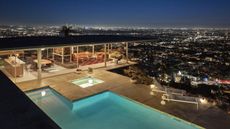
The Architecture Edit: Wallpaper’s houses of the month
From wineries-turned-music studios to fire-resistant holiday homes, these are the properties that have most impressed the Wallpaper* editors this month
By Anna Solomon Published
-
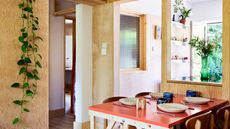
A refreshed 1950s apartment in East London allows for moments of discovery
With this 1950s apartment redesign, London-based architects Studio Naama wanted to create a residence which reflects the fun and individual nature of the clients
By Tianna Williams Published
-
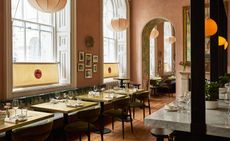
Poon’s returns in majestic form at Somerset House
Home-style Chinese cooking refined through generations of the Poon family craft
By Ben McCormack Published
-
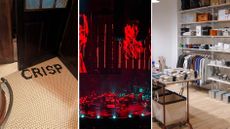
Out of office: The Wallpaper* editors’ picks of the week
This week, the Wallpaper* team had its finger on the pulse of architecture, interiors and fashion – while also scooping the latest on the Radiohead reunion and London’s buzziest pizza
By Ellie Stathaki Published
-
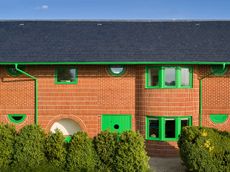
David Kohn’s first book, ‘Stages’, is unpredictable, experimental and informative
The first book on David Kohn Architects focuses on the work of the award-winning London-based practice; ‘Stages’ is an innovative monograph in 12 parts
By Jonathan Bell Published
-
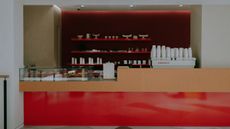
One of London’s favourite coffee shops just opened in Harvey Nichols
Kuro Coffee’s latest outpost brings its Japanese-inspired design to the London department store
By Tianna Williams Published
-
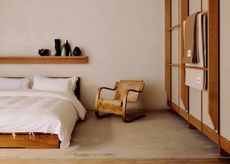
Tekla’s ‘soft and inviting’ London store is made to feel like you’re coming home
Opening on Marylebone High Street this week, the brand’s founders Charlie Hedin and Kristoffer Juhl talk to Wallpaper* about the domestic-inspired space, which marries elements of Danish and British design
By Jack Moss Published
-
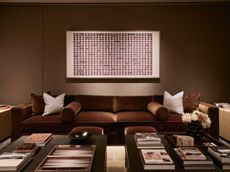
100 George Street is the new kid on the block in fashionable Marylebone
London's newest luxury apartment building brings together a sensitive exterior and thoughtful, 21st-century interiors
By Ellie Stathaki Published
-

Enjoy a Kyoto-inspired menu with London attitude at this new restaurant
Aki London offers a serene counterpoint to Oxford Circus, where stately interiors and elevated Japanese cooking cross paths
By Ben McCormack Published
-

Out of office: The Wallpaper* editors’ picks of the week
It’s been a week of escapism: daydreams of Ghana sparked by lively local projects, glimpses of Tokyo on nostalgic film rolls, and a charming foray into the heart of Christmas as the festive season kicks off in earnest
By Anna Solomon Published
-
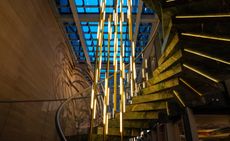
Lee Broom reimagines the Christmas tree at Mandarin Oriental Mayfair
The London hotel unveils an inventive take on the festive tradition – with absolutely no needles
By Sofia de la Cruz Published
-

Wes Anderson at the Design Museum celebrates an obsessive attention to detail
‘Wes Anderson: The Archives’ pays tribute to the American film director’s career – expect props and puppets aplenty in this comprehensive London retrospective
By Emily Steer Published
-

Meet Eva Helene Pade, the emerging artist redefining figurative painting
Pade’s dreamlike figures in a crowd are currently on show at Thaddaeus Ropac London; she tells us about her need ‘to capture movements especially’
By Hannah Silver Published
-

Cinema’s tastiest moments to be celebrated by Mubi in an all-day festival
‘Let’s Eat! A Film Feast’ spotlights the sensory power of food on film with a day of screenings, talks and culinary delights in London
By Sofia de la Cruz Published

